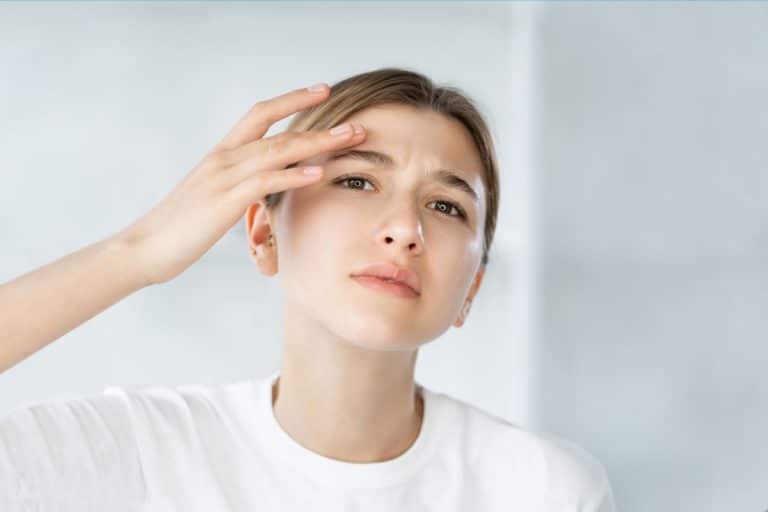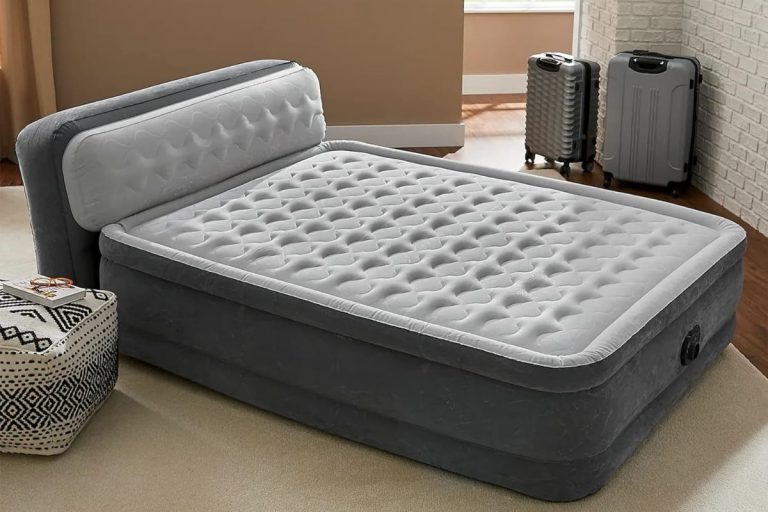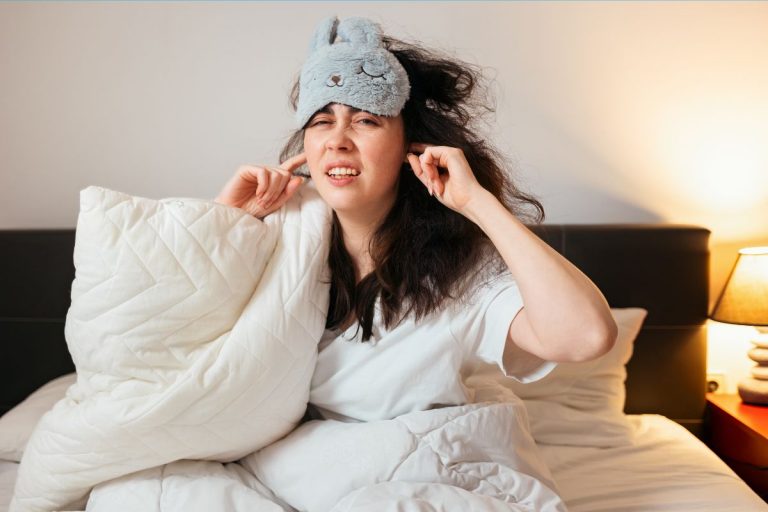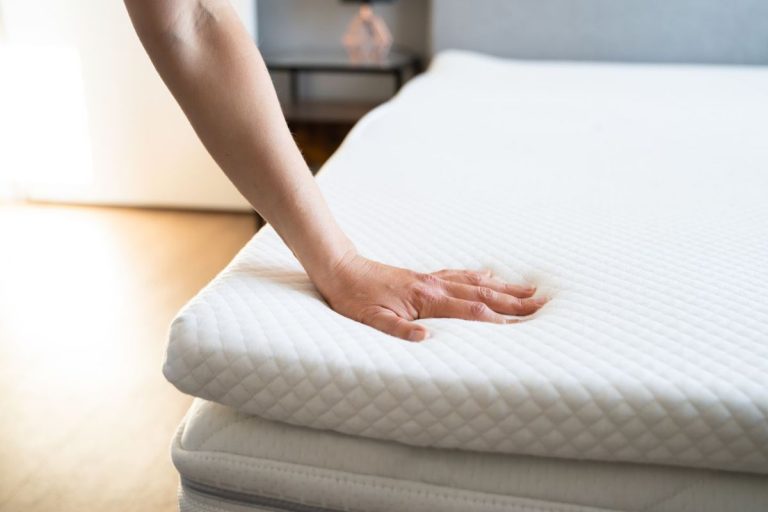Whether you’ve had long hair for years, or have recently grown it out, there are some important tips that all long hair owners should know. A surprising number of people are not aware of the best way in which to treat your hair when it comes to sleeping with long hair. Friction, excess moisture and tangling during the night can lead to breakage, split ends, and dryness. But should you wear your hair up or down during sleep? Should you apply any products? And what should you avoid doing which could damage your hair?
It can be really annoying to sleep with long, unruly hair – from tangling to over-heating, or getting trapped under body parts, it’s quite a challenge! So it’s only natural to seek out some top tips on how to look after it at night.
To maintain your hair in top condition, there are a few options to consider, and several easy steps to take, from changing your bedtime routine, learning the best way to tie it up, to investing in some new products. We’ll also take a look at the most important habits to keep your hair looking lush. This guide is for everyone with long hair!
Join us to discover more about sleeping with long hair and protect those shining locks!
What NOT To Do With Long Hair While Sleeping
Before getting into the details of what you should do with long hair during the night, perhaps it is easier to list what you should definitely not do! The top 3 examples of bad practice are:
- Wearing hair products containing alcohol, like hairspray, to bed. The alcohol content of these products can cause dryness and eventually make your hair brittle and prone to breakages.
- Wearing hair accessories to bed including metal clips, hair extensions, and hair elastics. These can weaken the hair, causing damage, visible ‘dents’ in the morning, and increasing friction against the fibers of your bed.
- Going to sleep with your hair wet. When your hair is damp, it is at its most vulnerable because the chemical bonds of keratins (proteins) within the hair follicles actually become weaker. So when you sleep with wet hair, or even when you brush wet hair over-enthusiastically, this can distort the hair follicle, leading do stretching and ultimately damaged hair.
Should You Wear Hair Up Or Down During The Night?
One of the key questions on everyone’s lips when it comes to long hair is whether it is better to sleep with it tied up or unsecured during sleep. The answer is straightforward – avoid sleeping with unsecured, flowing hair. This can increase friction which leads to tangling and breakage. It also means your hair is in contact with your neck and shoulders or back during the night, exposing it to sweat and humidity. This can increase greasiness and frizz.
So, you should wear your hair up while you sleep, but the method you use is important. You should avoid pulling you hair back tight to the scalp and this means avoiding using hair elastics which place a lot of strain on the follicles and scalp. Gently secure it using a soft scrunchie, ideally made from silk or other natural fibers, like these 100% silk scrunchies. We’ll talk more about the benefits of silk in the guide below!
But how should you put your hair up during sleep? A number 1 tip is to avoid pulling it into a ponytail which can cause discomfort, ‘dents’, and weaken the follicles with movement overnight. Try one of the following styles for maximum comfort and great hair care…
Braids
Tying your long hair into braids during the night is the absolute top recommendation by hair experts. Braiding your hair places the least amount of strain on the hair follicles (as long as you don’t pull the braids too tight!). Any style of braid is fine, single or multiple, simple or French, the options are endless.
Consider whether you are a side-sleeper or back-sleeper – this can help you decide which style of braid works for you. For instance, if you mostly sleep on your back, dividing your hair into 2 braids either side of your head can be comfortable for your head position.
Braiding your hair will also give it a gentle, wavy look in the morning – another bonus! Make sure to secure the braids with soft scrunchies rather than hard elastics to avoid ‘dents’ and breakages. You can leave the plaits dangling or coil them on top of your head and secure to keep your hair away from your neck.
Loose Top Knot
Forming a nice, loose top knot by piling the hair on the crown of your head with a fabric scrunchie is a recommended method for tying your hair up during sleep. Try not to pull the hair too tight and aim to keep it up, away from your neck. Contact with your neck, shoulders and back during the night exposes your hair to sweat and adds moisture to it which can damage hair if repeated night after night. Tying it up and away on top of your head is both comfortable and hygienic during sleep.
This can be a nice style to try in the summer when long hair adds to the over-heating effect during night-time. Get it up and away and keep yourself cool!
Scarf, Cap Or Hair Wrap
If you’re going for a smooth, straight look, a scarf, cap or hair wrap could be an ideal choice during sleep. Wrapping one of these hair-containing devices around your head helps to reduce friction when tossing and turning, maintaining straightness and protecting your hair from humidity gained from contact with your neck and shoulders.
It is recommended to choose an item made from silk or satin. These natural materials are great for your hair – the minimise friction and keep your head cool at the same time. Using a silk cap contains the natural oils produced by your hair follicles, hydrating your hair naturally while you sleep.
Be warned that imitation silk fabric and low-quality satin do not have the same benefits as the real deal! In this case, it can be worth investing in something slightly more expensive to gain the maximum benefit for your hair. As long as the lining is good quality silk or satin, and the outer is a natural fiber (such as these silk-lined, bamboo caps), you can’t go wrong.
Also Read:
What To Do With Long Hair While Sleeping
Now we have covered the best ways in which to put your hair up while sleeping, let’s have a look at some other methods to improve your hair health during the night.
Silk/Satin Pillowcase
Although cotton and bamboo pillowcases are great for sleeping due to their breathability and comfort, they may cause friction for your hair. Similarly, synthetic materials can damage your hair through rubbing when you toss and turn at night. Friction causes breakage, tangling, and frizz, and can lead to long-term damage like split ends, dryness, and brittleness.
Silk and satin have extremely fine fibres, reducing friction and protecting your hair. As a bonus, they are hypoallergenic, and have a greater cooling effect compared to cotton and synthetic fibers.
Silk is an extraordinary, natural product which has been used throughout history. Scientists are still discovering the incredible properties silk offers, including medical benefits.
Brush Before Bed
Gently brushing your hair once before sleep, from the ends to the roots, reduces tangles gained during the day and makes it easier to deal with in the morning. Brushing can also distribute the natural oils produced by the follicles throughout the hair strands, locking in natural moisture and protecting it during sleep.
Protect Hair With Oil
This can be particularly useful if you suffer from dry hair. By using gentle, natural oils on your hair, but especially on the ends of the hair, you can nourish it during sleep. This also protects it from friction and tangling by hydrating it.
Oils like almond, jojoba and coconut are highly recommended. Argan oil appears to be a ‘super substance’ when it comes to hear. This is because it penetrates the shafts of the hairs, and helps to hydrate the hair from within as well as without. Argan oil is also proven to reduce hair breakage.
These essential oils do not have super strong smells so will not keep you up at night! Avoid products containing menthol, or eucalyptus – these are stimulants and will cause your sensory system to wake up, the opposite of what you want when trying to calm down for sleep!
To apply oils, place a few drips in your palm, rub your hands together to warm the oil a little, and rub it carefully into your hair. Pay particular attention to the ends of the hair, as these can take a lot of damage during sleep. As well as hydrating and protecting the hair follicles, using oil can also prevent split ends.
Hair Serum/Hair Mask
Applying a lightweight serum, designed for overnight use (such as this unisex overnight serum), can be very effective. Hair masks which are safe for using overnight (check the packaging carefully!) are also recommended. Hair experts usually advise applying these products once a week. It is important to avoid any products which contain acidic components which can be very damaging to hair if left in for a number of hours.
Also avoid products containing heavy protein additives (such as egg) which will contribute to breakage with the friction experienced during sleep. It is recommended to use products containing light botanical ingredients (such as aloe vera). These are kind to your hair, and safe to leave in during the whole night.
Serums and masks are designed to stimulate your scalp, restore the health of your hair, and lock in desirable moisture. They will help to reduce tangling, and strengthen the hair. In case of staining, placing a towel or ‘sacrificial’ pillowcase over your regular pillowcase is recommended. Always wash hair masks out in the morning! Some serums require removal after sleep too – check the packaging.
Takeaway Message
So, what have we learnt? Wear your hair up, not down. Tie it loosely in a top bun, braids, or a hair wrap, using (ideally!) silk scrunchies. Make sure to avoid contact with you neck, back and shoulders to minimise humidity and sweat transference. Consider trying some treatments before sleep to protect your hair health and discourage tangling and damage, such as applying natural oils. Looking after long hair while you sleep doesn’t have to be hard or expensive! Just build a couple of simple steps into your bedtime routine to promote hair health and avoid breakage.
Also Read: Can You Sleep With a Wig On? (6 Useful Tips)





